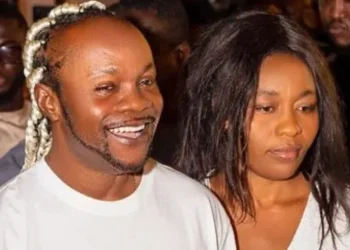At its best, theatre is a live laboratory of ideas: a place where artists expose themselves to an audience’s immediate reaction, where misfires and triumphs alike are part of discovery.
Historically, response to a production—applause, boos, post-performance talkbacks, newspaper reviews—was filtered through time and expertise.
Critics and public opinion shaped reputations over weeks and months, allowing context, rehearsal, and revision to temper reaction.
Social media has not abolished public judgment; it has multiplied and accelerated it, shrinking deliberation into seconds and amplifying the loudest voices into verdicts that can feel final.
Singer Gyakie has expressed her displeasure over how nowadays, “the stage feels like a courtroom”.
The Afropop star bemoaned “how everyone comes online to troll artists” based on excerpts from their live performances.
She intimated she “mostly enjoy[ed] making music in the studio” over live performances, since the latter now demands an artist to be “extra mindful of their conduct, because some troll is probably making a creepy video of you to use against you online.”
“If I take that out, it’s always fun for me to be on stage,” the Highlife hitmaker emphasised.
On a recent memorable live performance, the singer, nicknamed Songbird, recalled being in Sierra Leone.
“I went to perform in Sierra Leone last December, and the reception was so amazing. I didn’t expect that they would sing most of my catalogue word for word. Every single day was full of genuine love.”
Gyakie
The dynamics that make social media powerful also make it punitive. Hashtags, shareable clips, and viral threads concentrate attention quickly on a single moment: a line read, a casting choice, a costume, an offstage allegation.
What might have been one review or a handful of audience reactions becomes a cascade of headlines, takes, and demands.
That cascade acquires courtroom vocabulary—“guilty,” “call out,” “canceled”—and procedures: instantaneous accusation, evidence presented in the form of snippets, and a public sentencing carried out by likes, retweets, and boycotts.
For performers and creative teams, the effect is unnerving. Instead of arriving at the stage to be welcomed into a communal experiment, artists increasingly face the possibility that a single moment or historic mistake will be magnified into a reputational crisis.

The result is often defensive programming, self-censorship, and an environment hostile to risk—antithetical to the very purpose of live art.
The consequences extend beyond artistic caution. The social-media courtroom jeopardizes personal safety: targeted harassment and threats directed at cast and crew are now alarmingly common in public controversies.
Economic consequences follow: productions lose investors or are shut down after a spate of bad publicity; venues overreact to protect funding or reputation; artists find themselves unemployable after a viral controversy, regardless of the truth or its complexity.
These are not abstract harms—they reshape career paths and the kinds of stories that get told onstage.
That said, it would be dishonest to paint social media only as a villain. Platforms have democratized criticism, giving voice to audience members, marginalized communities, and early-career critics who were historically excluded from cultural gatekeeping.
Social media has exposed abuses in the arts that might otherwise have remained hidden and has forced institutions to confront inequity in casting, pay, and workplace culture.
It has expanded audiences and created new pathways for engagement: livestreams, behind-the-scenes access, and immediate dialogue between creators and viewers deepen interest in theatre and make it more accessible.
Path Forward

The metaphor of the stage as a courtroom captures a real anxiety felt by artists and audiences: theatre has become vulnerable to public trials that reward spectacle over deliberation.
Yet the courtroom need not be the fate of cultural spaces.
By intentionally shaping the norms of online discourse, designing platform features that value context, and strengthening theatre institutions’ capacity for accountable, proportionate responses, it preserves the stage as a place of experiment, provocation, repair, and communal encounter.
Reclaiming the stage requires technological fixes, institutional courage, and cultural maturity.
If the rush to verdict is slowed and restores space for nuance, performers once again stand before an audience rather than before an inquisition — and art resumes its essential role as a place where ideas are tested rather than tried.
READ ALSO: President Mahama Rules Out Third-Term Bid, Insists on Fiscal Discipline























